Indigenous expertise can transform innovative research and science policy beyond limits
Author(s):
Jessica Kolopenuk

Jessica Kolopenuk, Assistant Professor, Faculty of Medicine & Dentistry - Family Medicine Department, in Edmonton, on January 26, 2023.
Disclaimer: The French version of this text has been auto-translated and has not been approved by the author.
AI was used to summarize notes taken at the Kavli Frontiers of Science Symposium.
In March 2025, I crossed the Canada–United States border to attend the Kavli Frontiers of Science Symposium hosted by the U.S. National Academy of Sciences. The annual symposium brings together emerging leaders in their fields to co-think, build relationships, and, in honesty, wonderfully nerd out for three days on fascinating sciences beyond one’s disciplinary location. I was the only representative from a Canadian institution invited to join this year’s cohort. I travelled with some hesitation. The relationship between Canada and the U.S. has become tense following the Trump administration’s threats to Canadian sovereignty, its trade war, and for my purpose, reports of academics facing heightened security and even detainment at border crossings. These realities are conditioned by the ongoing relationships between national politics and globally interconnected research ecosystems. Additionally, as an Indigenous researcher, the homologous experiences of crossing a colonially imposed border to attend a symposium about “frontier science” were not lost on me. Indeed, the connection between scientific knowledge production and governance cannot be made more evident than by unpacking the term “frontier” – a metaphor that describes the edges of colonial spaces and knowledge fields.
The colonial concept of a “frontier” is shaped by a logic of exploration, expansion, and possession where colonizers, their nation-states, and the beneficiaries of a colonized place render land, peoples, and knowledge discoverable, extractable, and governable. When scientific discourse metaphorically uses “frontier,” it reproduces this logic by framing knowledge as something to be discovered, claimed, and owned. The discourse also tends to position Indigenous peoples as being the object of, and subject to rather than creators of scientific and other forms of knowledge. This metaphor, therefore, positions a rightful “explorer” of the unknown, marginalizing other ways of knowing like Indigenous knowledge systems as being primitive precursors or supplementary data sources to “real science”. The frontier metaphor obscures the political and epistemological violence embedded in the colonial knowledge/power nexus. Releasing innovative research and science policy from frontier thinking means shifting from harmful colonial metaphors to relational, geographical, and non-hierarchical approaches to knowledge production.
Despite my hesitation to attend the symposium, what compelled me to, and ultimately affirmed the importance of doing so, was the conviction that scientific knowledge production, particularly in times of heightened political tension, must reach beyond disciplinary, geographic, and epistemic boundaries even as their limits shape it. As such, the Canada–U.S. border was not the only limit I crossed in March. Disciplinary lines and so-called scientific “frontiers” were also transcended. My experience as a Kavli Fellow reinforced a crucial insight: meaningful international knowledge exchange depends not only on collaboration among nation-states but also on an openness to fundamentally different ways of knowing. For this reason, scientists and science policymakers should not treat Indigenous knowledge systems as peripheral to science and technology fields but as core to the future of national and international research and innovation.
At this year’s symposium, the theme of relationality emerged repeatedly albeit implicitly, whether in discussions about social evolution in bees, the neural representation of mental imagery, wildfire mitigation, or the ethics of scientific leadership. Researchers across disciplines explored how individual units become part of larger systems, how meaning arises through interconnection, and how complex phenomena require systems-level thinking. These approaches are not new to Indigenous peoples. Many Indigenous worldviews have long foregrounded relationality as the foundation of being, governing, and knowledge sharing.
Take, for example, the Ininiw (Cree) understanding of peoplehood, which can be thought of as a form of collective life, not in the evolutionary terms of biological superorganisms, but as a way of living in which responsibilities to others, including the more-than-human world, define individual purpose and collective wellbeing. Rather than merely analogizing Indigenous thought and colonial metaphors to scientific concepts, we should ask what it might mean to value the leadership of Indigenous ways of being and knowing that animate our modes of governance and inquiry so that they may shape the very questions research and science policy ask in pursuit of innovation.
Suppose we want science and technology fields to thrive across borders, disciplines, and generations. In that case, we must begin by questioning the assumptions embedded in our current systems. Who gets to define research priorities? Whose questions drive their innovation, and who benefits from it? Who is recognized as an expert, and who is not? Indigenous scholars and communities are addressing these questions with rigour and imagination. From critiquing the colonial politics of genomics to advancing Indigenous data sovereignty, they are not just filling gaps in science and technology fields but proposing entirely different orientations toward knowledge production and responsibility.
Yet these contributions remain scarce in many national and international scientific forums. To change this, and as Canada’s nationalism resurges in this political moment, we must move from frameworks of Indigenous “inclusion” toward those of “sovereignty” – Indigenous sovereignty. This means more than inviting Indigenous peoples into existing nation-states and institutions; it means co-creating new opportunities where Indigenous governance, values, and priorities lead the direction of research and governance. It means not only asking what science can do for Indigenous communities, but what science itself might become when governed by local peoples and geographical Indigenous values and practices of relationality and collective responsibility.
The Kavli Symposium reminded me that the strength of international scientific exchange lies not in uniformity but in the capacity to hold difference and recognize that Indigenous ways of knowing have the potential to transform not just science and the policies that govern it but the future we all share. That future depends on more than scientific and technological “advancement” across “frontiers;” it depends on how we relate. Let us imagine sciences that do not simply cross limits but rethink them.

